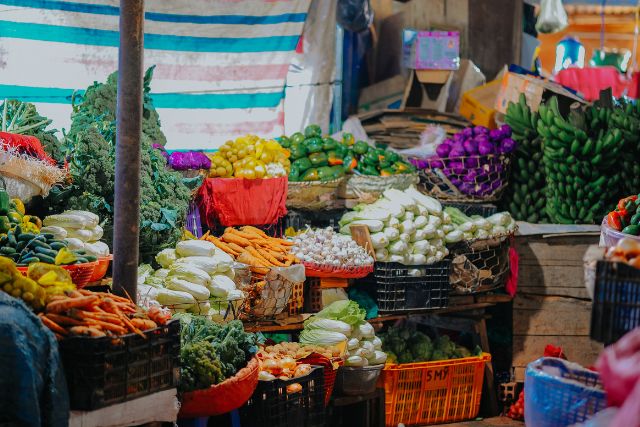
History of Wet markets and How many Wet markets are there in Singapore
The culture of Singapore takes place in many areas of its horizon, and one of them occurs in wet markets.
In every country in the world, there are different terms used for wet markets. This is usually where people can buy fresh produce like meat, fish, shrimp, chicken, and vegetables at an affordable price. But in Singapore, there’s a more heartfelt connection it has with the community.
Wet markets are the preferred shopping destination for members of older age. At the same time, supermarkets are the go-to destination for members of the younger generation when it comes to food shopping. Wet markets are buzzing with activity 24 hours a day, seven days a week. Under the same roof, business owners of various racial backgrounds are all selling wares unique to their cultures to clients.
The early hours at the wet market are characterized by a frenetic atmosphere characterized by cries for inexpensive deals and morning pleasantries exchanged between frequent customers and the proprietors of the stalls. There is a frequent occurrence of heartwarming gestures, such as shop owners packaging more veggies for regular customers at no additional cost and regular customers purchasing a cup of coffee from store owners. These thoughtful acts go a long way toward further building the link between consumers and merchants.
Because hawker centers are often merged with wet markets, it is common for individuals to meet up with their friends at hawker centers after they have finished their food shopping. They converse while drinking a cup of joe or eating breakfast together. Wet markets are no longer just places where people go to pick up food components as they make their way through their day. People can develop strong and meaningful ties with one another since it serves as a hub for social contact and provides this opportunity.
Singapore’s wet market has come a long way in development and history before it has become the heart of Singapore. Let’s go back and read how wet markets started:
- Little is known about pre-colonial marketplaces, although evidence shows they grew naturally wherever people traded. In the 1800s, marketplaces were informal groups of merchants and peddlers with their products on the ground or in baskets.
- Sir Stamford Raffles authorized the building of Telok Ayer Market's precursor in 1822.
- When Telok Ayer Market began in 1825, jetties loaded and unloaded products directly onto boats. The market was replaced with one created by Singapore's first architect, George Drumgoole Coleman, but it was destroyed in 1841 because it couldn't suit Chinatown's marketing demands.
- In 1894, Lau Pa Sat opened. It was octagonal with fan-shaped openings. This market closed in 1986 and became a grocery center.
- In the 1950s and 1960s, street hawkers and public housing led to the growth of wet markets.
- Poor sanitation and cleanliness forced the Singapore government to shift street hawkers to wet markets cum hawker centers after independence in 1965.
- Tiong Bahru Market was constructed in 1950. Wet markets followed in Chinatown, Little India, and newly-built Queenstown and Toa Payoh. Wet markets were largely independent of the 1950s until the 1990s; however, some were part of community centers.
- Over 100 hawker centers were established during the 1990s. Singapore features 107 wet markets and hawker places (and many more), all open to Singaporeans.
To give you the whole experience of the wet market in Singapore, here are some of the most visited wet markets, and stop by the nearest to your location.
- Tekka wet market
Location: 665 Buffalo Rd, L1 Tekka Centre, Singapore 210665
If you want to learn about Singaporeans and our culture, visit Tekka Market. You'll hear English, Hokkien, Mandarin, Malay, and Tamil at this busy wet market. This market is a venue to learn about Singapore's ethnic populations and culinary customs.
- Chinatown wet market
Location: Chinatown Complex, 335 Smith Street, Singapore 050335
Singapore's Chinatown Wet Market is exotic. This wet market in Chinatown keeps its Chinese tradition and culture.
- Tiong Bahru wet market
Location: 30 Seng Poh Road, Singapore 168898
Tiong Bahru Wet Market is notable for fresh food. Some vendors' vegetables are wrapped as if bought from supermarkets to help consumers.
- Geylang Serai wet market
Location: 1 Geylang Serai, Singapore 402001
Geylang Serai Market is Singapore's largest wet market. This market has been a hub for the Malay community since 1964, offering Malay and Indian-Muslim dishes.
- Senoko Fishery Port
Location: 31 Attap Valley Road, Singapore 759908
Agri-Food & Veterinary Authority of Singapore operates Senoko Fishery Port. This wholesale fish market distributes fish from local fishers, in-shore boats, fish farms, and foreign sources to Singapore's markets, supermarkets, food courts, and restaurants. Senoko Fishery Port has various amenities besides the fish market, including a cafeteria and a place where you can get your morning coffee.
Sources:
